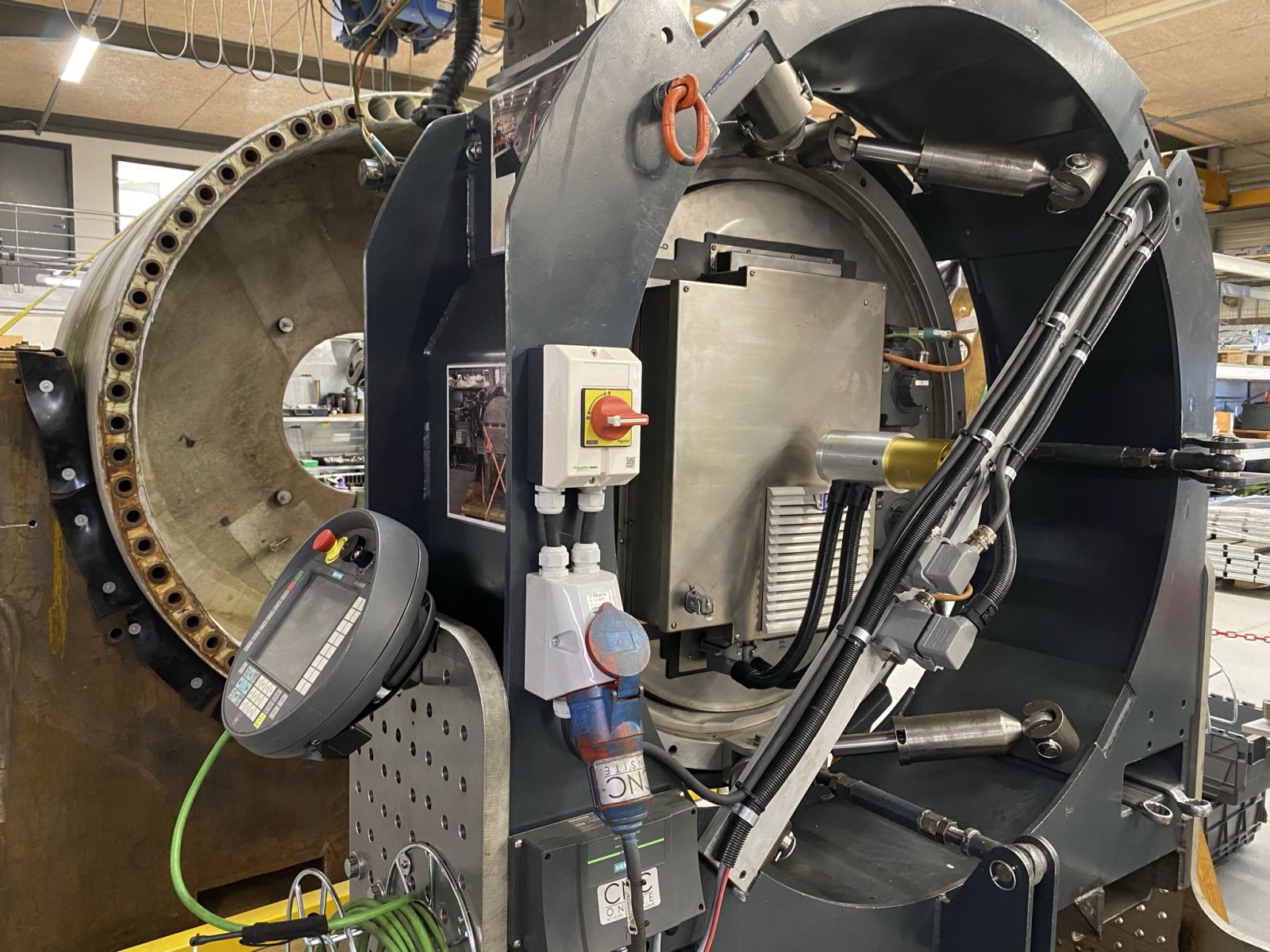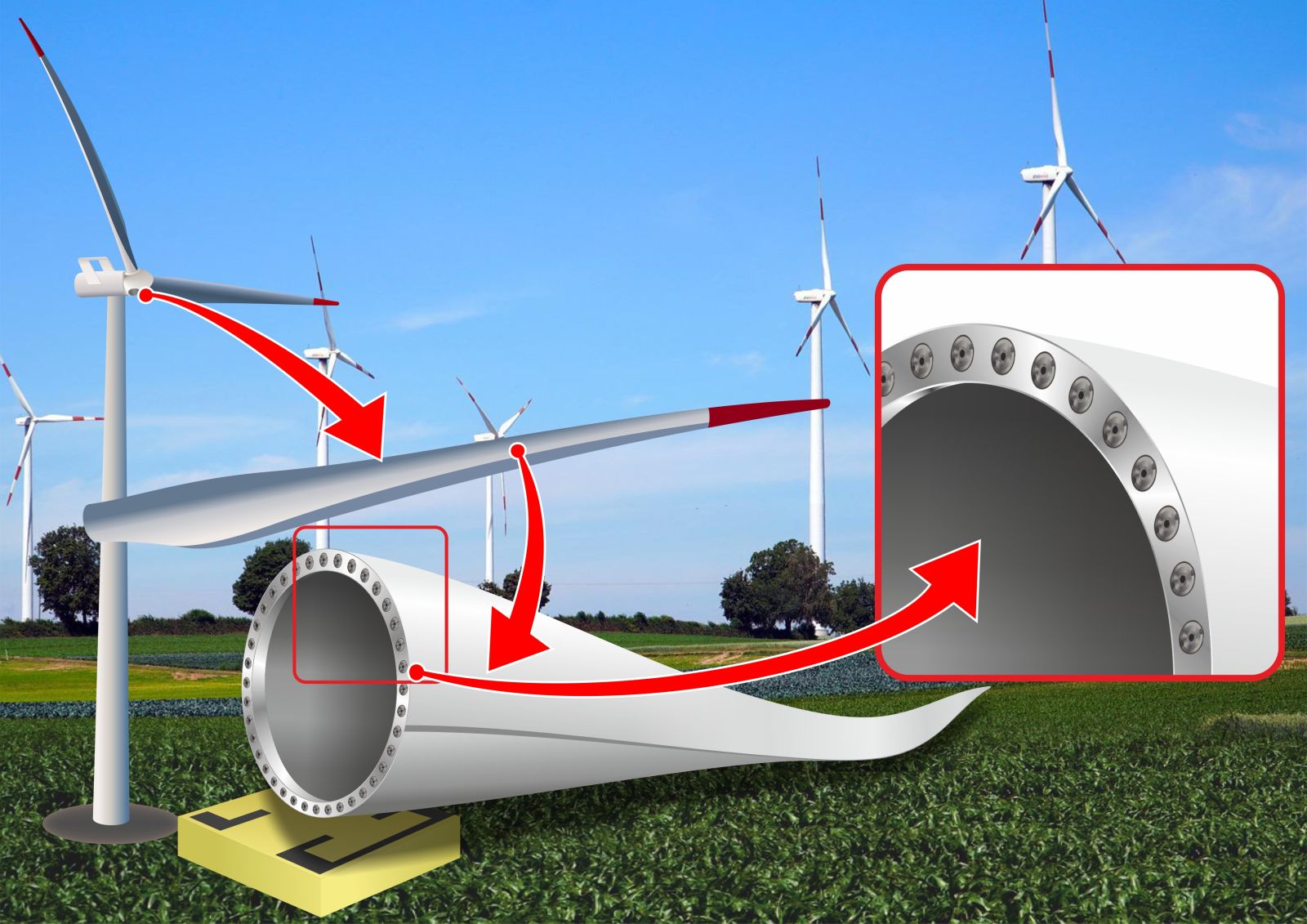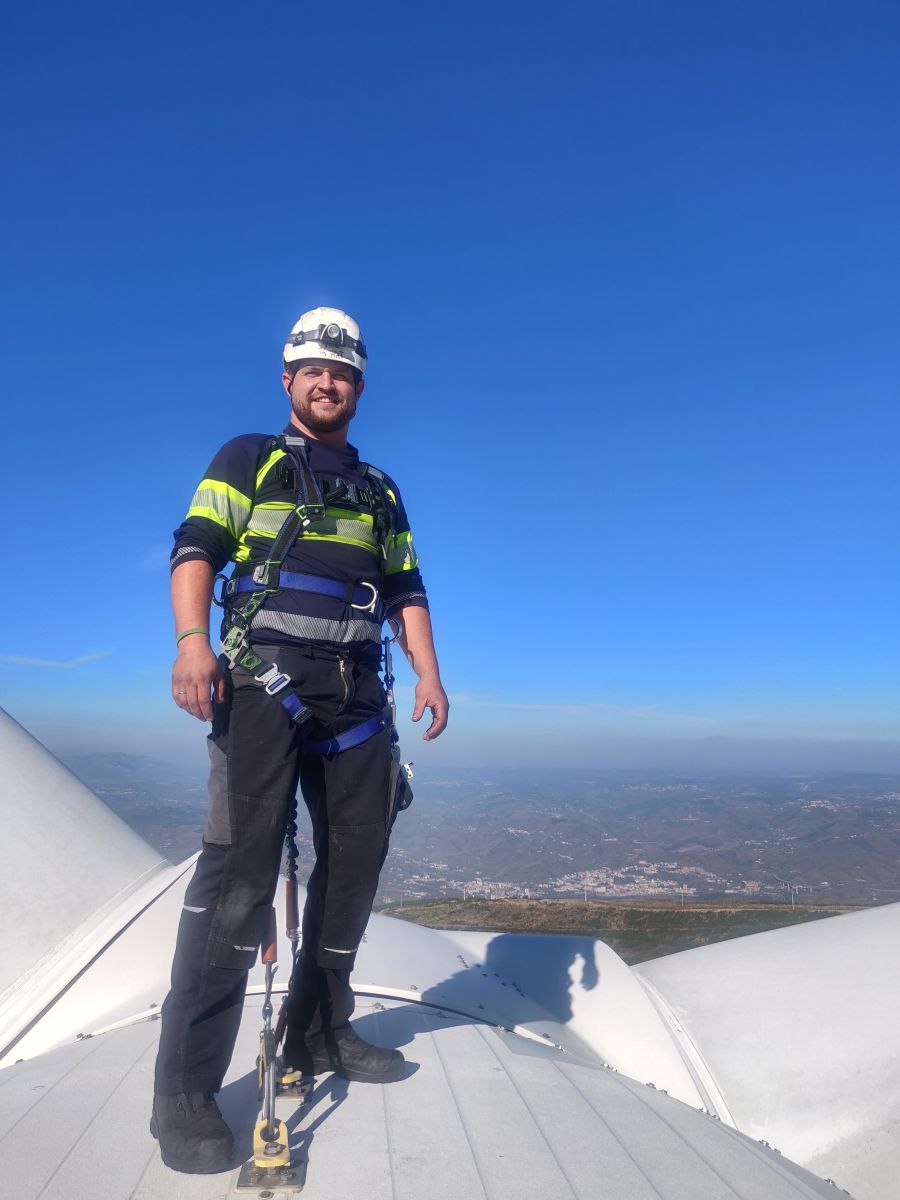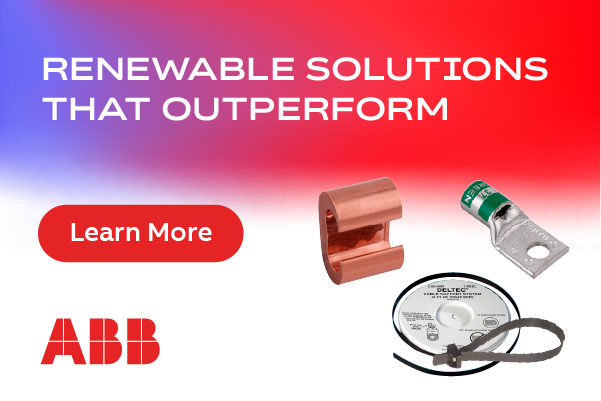Logistics of On-site Repairs
 Wind turbine blade roots are traditionally repaired at the manufacturer, requiring costly logistics and long downtime, often leaving operators with no choice but to purchase a new blade or scrap the entire turbine. A new, portable machining tool can efficiently replace damaged inserts in blade roots, offering economical, precision repairs carried out at the wind farm, eliminating transport costs and approval (financial and environmental), as well as waiting times for a repair slot.
Wind turbine blade roots are traditionally repaired at the manufacturer, requiring costly logistics and long downtime, often leaving operators with no choice but to purchase a new blade or scrap the entire turbine. A new, portable machining tool can efficiently replace damaged inserts in blade roots, offering economical, precision repairs carried out at the wind farm, eliminating transport costs and approval (financial and environmental), as well as waiting times for a repair slot.
Embedded into the blade root during the manufacturing process, the threaded inserts that are critical for joining the blade to the nacelle hub can loosen over time. In these older blades, any resulting microcracks allow contaminants such as grease and hydraulic oil to weaken the bonding. This ultimately endangers the structural safety of the blade root, especially when fatigue loading is high. At worst, the blade breaks away.
Root causes
There are several root causes for loose inserts. Generally, it’s a combination of factors that leads to failure. While in the past, manufacturers designed with high reserve factors, these have been reduced for newer, more economical turbines. Consequently, the risk is increasing. The most obvious manifestation of this is that the PCD (Pitch Circle Diameter) of rotor blades is now relatively small compared to the longer blade length and increasing mass moment.
A second root cause is the use of polyester as resin, which is more sensitive to shrinkage than, for example, epoxy. Higher volumes of resin, such as in closed chamber locations (i.e., between the unidirectional bar and bushing) shrink more than thin layers. The inconsistent shrinkage in those thinner layers, such as between the root laminate and bushing, then leads to the formation of microcracks, resulting in a reduction of the bonding surface of the bushings.

A third point is a reduction in the quality of the materials used in manufacturing, often due to cost optimization.
Optimizing the prognosis after the on-site repair, a special bushing that mechanically locks into the blade has been designed. Furthermore, polyester resin, despite improvement over the last ten years, has been replaced by an innovative infusion of an epoxy-type resin. These design and technology changes lead to a rejuvenation of the connection, allowing the blade to reach its original design lifetime.
On site
A new repair solution involves dismounting the rotor blade before placing it in a repair environment at the wind farm. A portable, automatic machining tool is aligned to the blade, and drills away the faulty inserts from the composite material. An additional, highly accurate drilling process ensures that the new part can be inserted, precisely aligned with the previous insert, and then fastened using bonding material.
 The standard method of repairing wind turbine threaded inserts requires the transport of the complete blade to the manufacturer. As this is often not financially feasible, the operator may decide to keep the turbine running at reduced capacity, or even decommission it. Oversized transport is costly, requires lengthy planning and approval (a particular issue in Germany, where it can take months), and the cost of downtime is significant. In addition, there is a risk of damaging the blade structure during handling and transport. All of these hurdles are avoided when repair occurs on site.
The standard method of repairing wind turbine threaded inserts requires the transport of the complete blade to the manufacturer. As this is often not financially feasible, the operator may decide to keep the turbine running at reduced capacity, or even decommission it. Oversized transport is costly, requires lengthy planning and approval (a particular issue in Germany, where it can take months), and the cost of downtime is significant. In addition, there is a risk of damaging the blade structure during handling and transport. All of these hurdles are avoided when repair occurs on site.
Onsite repair is energy-efficient and environmentally friendly, has a much smaller carbon footprint, and can be offered at a fraction of the costs of a traditional repair. The wind turbine can run again at its design capacity and reach its design lifetime.
Setup options
The repair solution can be set up semi- or fully automatically. For a blade with fewer loose inserts, the semi-automatic solution can be quickly configured, but requires additional time per insert. If the majority of inserts are loose, the automatic setup takes longer, but can process each insert quickly. Nevertheless, factors such as site conditions, site layout, the total number of blades to be repaired, etc. can influence the choice of solution. A close dialog with the customer is needed to find the optimal solution. Depending on the number of faulty inserts, the new blade root repair is estimated to take two to three days (as opposed to spending many months at the manufacturer).
Older blade designs = shorter lifetime
Blade manufacturers are currently running at full capacity, while older blade models are often phased out after some five to 10 years. Blades are the most expensive turbine components, accounting for some 25 to 30 percent of the build cost. Efficient repair is, therefore, increasingly important; problems with threaded inserts (usually detected during maintenance) mostly occur in turbines older than seven years, when a replacement for a phased-out blade would require the mold to be recreated.
A planned collaboration with a specialist sensor company should allow millimeter gaps in the inserts to be detected. Such inspections could be part of a full-service solution, detecting any forming damage earlier, and enabling early intervention.
Søren Kellenberger is Sales Director at CNC Onsite, a Danish machining specialist in the wind energy sector. With a mechnical engineering background, Søren has worked for 15 years in the wind turbine industry, working on turbine development, transport and installations equipment for turbines, and special equipment for O&M. Soren previously worked as Business Unit Director at R&D Engineering, responsible for the market launch of a patented solution “Bolt-check”, a tool that measures correct bolt tension in wind turbines.
CNC Onsite | cnconsite.dk
Author: Søren Kellenberger
Volume: 2023 July/August








